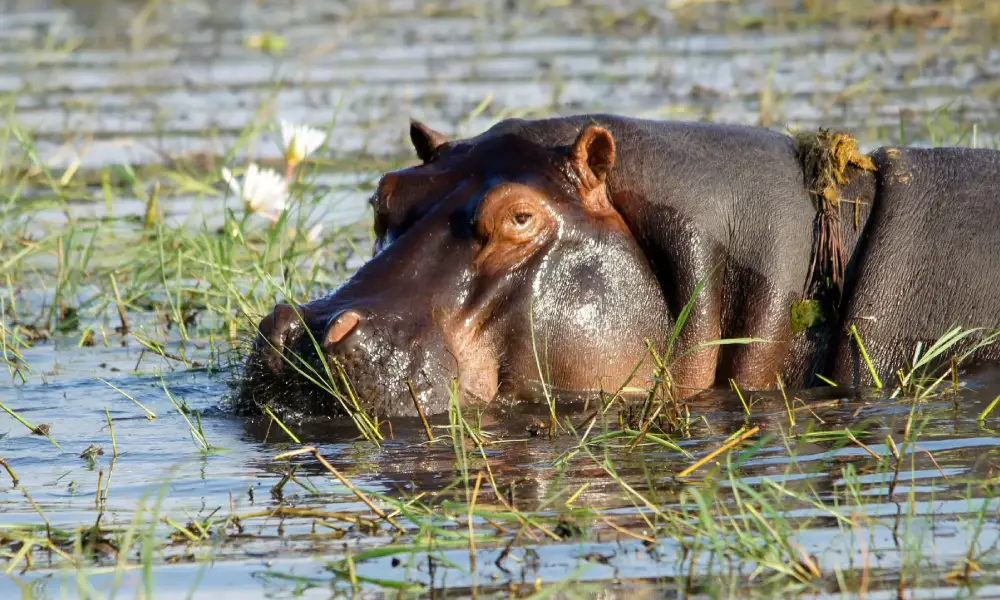
Lower Zambezi National Park, along the Zambezi River, offers breathtaking landscapes and diverse wildlife. Spanning 4,092 km², it’s home to elephants, lions, leopards, and hippos. Canoe safaris, boat cruises, and game drives provide unforgettable experiences. Its remote, unspoiled beauty makes it a top safari destination in Zambia.

Lower Zambezi National Park offers a unique safari experience along the Zambezi River, with stunning scenery and diverse wildlife. The park is home to large elephant herds, lions, leopards, buffalo, and hippos, while the river teems with crocodiles and birdlife. Canoe safaris provide a thrilling way to explore, gliding past wildlife on the riverbanks.
Boat cruises offer excellent game viewing and fishing opportunities, especially for the famous tiger fish. Game drives and walking safaris allow visitors to experience the park’s diverse ecosystems, from floodplains to woodlands. The park’s remote nature ensures an exclusive and uncrowded safari experience. The dry season (June–October) is the best time for wildlife viewing, while the lush green season (November–April) is perfect for birdwatching and photography.
Lower Zambezi National Park is accessible by air and road. The quickest option is a charter flight from Lusaka or Livingstone to Royal, Jeki, or Kulefu airstrips, followed by a short transfer to lodges. Scheduled flights to nearby airstrips are available during peak safari season (June–October).
By road, the park is about a 5–6 hour drive from Lusaka via Chirundu. The route includes a tarred road to Chirundu, followed by a rough dirt track requiring a 4x4 vehicle, especially during the rainy season (November–April). Some lodges offer boat transfers from Chirundu, providing a scenic alternative. Self-drivers should carry enough fuel and supplies, as facilities are limited. Despite the challenging access, the park’s stunning landscapes and incredible wildlife make the journey worthwhile.
Lower Zambezi is best visited from June to October for peak wildlife viewing. Activities include game drives, canoe safaris, and boat cruises. A 4x4 is required for self-drives, though charter flights are available. Malaria precautions are advised, park fees apply, and accommodation ranges from luxury lodges to budget campsites.
Lower Zambezi National Park, spanning 4,092 km² along the Zambezi River, is home to elephants, lions, leopards, buffalo, and hippos. Activities include canoe safaris, boat cruises, and game drives. Best visited from June to October, it’s accessible via charter flights or a 5–6 hour drive from Lusaka, requiring a 4x4 vehicle.
The best time to visit Lower Zambezi National Park is from June to October, during the dry season, when wildlife gathers along the Zambezi River for easier sightings. Canoe safaris, boat cruises, and game drives are most rewarding. The wet season (November–April) offers lush landscapes but can make road access difficult.
 27.7°c
27.7°c 28.1°c
28.1°c 27.0°c
27.0°c 27.8°c
27.8°c 26.8°c
26.8°c 25°c
25°c 23.7°c
23.7°c 27.5°c
27.5°c 30.7°c
30.7°c 29.1°c
29.1°c 30.2°c
30.2°c 26.9°c
26.9°cLower Zambezi National Park is home to elephants, lions, leopards, buffalo, and wild dogs. The Zambezi River hosts hippos, crocodiles, and abundant birdlife, including fish eagles and kingfishers. Canoe and boat safaris offer close encounters with wildlife, making it one of Africa’s top destinations for water-based safari experiences.









Kafue National Park, Zambia’s largest and oldest park, spans 22,400 km² and boasts diverse landscapes, from vast wetlands to dense woodlands.
Lower Zambezi National Park, along the Zambezi River, offers breathtaking landscapes and diverse wildlife. Spanning 4,092 km², it’s home to elephants, lions, leopards, and hippos.
Lorem Ipsum is simply dummy text of the printing and typesetting industry. Lorem Ipsum has been the industry's standard dummy text ever since the 1500s, when an unknown printer took a galley

Lorem Ipsum is simply dummy text of the printing and typesetting industry. Lorem Ipsum has been the industry's standard dummy text ever since the 1500s, when an unknown printer took a galley of type and scrambled it to make a type specimen book. It has survived not only five centuries, but also the leap into electronic typesetting, remaining essentially unchanged. It was popularised in the 1960s with the release of Letraset sheets containing Lorem

Lorem Ipsum is simply dummy text of the printing and typesetting industry. Lorem Ipsum has been the industry's standard dummy text ever since the 1500s, when an unknown printer took a galley of type and scrambled it to make a type specimen book. It has survived not only five centuries, but also the leap into electronic typesetting, remaining essentially unchanged. It was popularised in the 1960s with the release of Letraset sheets containing Lorem

Lorem Ipsum is simply dummy text of the printing and typesetting industry. Lorem Ipsum has been the industry's standard dummy text ever since the 1500s, when an unknown printer took a galley of type and scrambled it to make a type specimen book. It has survived not only five centuries, but also the leap into electronic typesetting, remaining essentially unchanged. It was popularised in the 1960s with the release of Letraset sheets containing Lorem